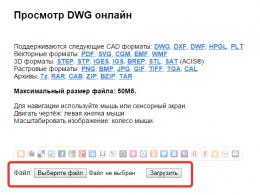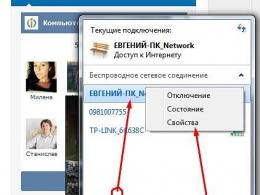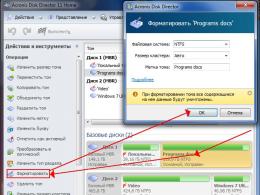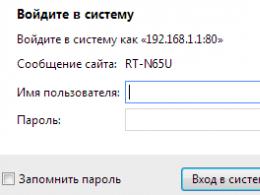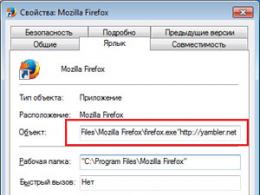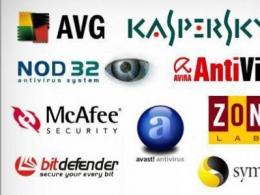The computer does not see the USB flash drive but determines the connection. The computer does not see the memory card: SD, miniSD, microSD
USB flash drive is a compact and convenient device for storing files. Like any equipment, it is subject to failures and breakdowns - both hardware and software. If the computer does not see the flash drive, you can usually deal with the problem yourself. We list the possible reasons why the USB drive is not displayed or not readable, and the ways to solve them as soon as possible.
When a flash drive is not detected, it is convenient to carry out primary diagnostics with a utility from Microsoft. It will not solve all possible problems, but it can eliminate common errors.

Download from the official site and run if your drive is not recognized. The utility is suitable for Windows 7 - 10.
USB ports
If the utility does not find out why the computer does not see the inserted USB flash drive, proceed to self-test. Start with the USB ports - they may be faulty or not enabled. If you inserted the drive into the port on the front of the system unit, move it back or try the adjacent slot. Along the way, check the contacts of the USB connector of the flash drive - if small debris gets on them, the device is not readable on the computer. Clean the dust with a toothpick, wipe the contacts with a cotton swab dipped in alcohol.
If the laptop does not see the USB flash drive, the reason may be the insufficient power of the power supply. When too much equipment is connected via USB to a PC - a mouse, a keyboard, a removable hard drive, a smartphone on recharging - there is not enough power for everything, and the system does not recognize the next device. In this case, just unplug the extra devices and re-insert the drive.
If the computer does not recognize the flash drive and other USB devices in any of the ports, USB is disabled in the BIOS settings. To access to change them, restart the PC, at the beginning of the boot, press the keys to enter the BIOS.

The desired combination will be written on the screen, usually F2. In the BIOS, go to the "Advanced" tab, click on "USB Configuration". In the "USB Controller" item, set the value to "Enables". Press F10 to save settings and exit.
Viruses
When a flash drive is detected, but not readable, it stands. If you recently inserted the drive into someone else's computer or laptop, it could host a virus. Then the system will connect your USB device, and when you try to copy files, it will give an error "Application not found" or "Access denied".
In order for the antivirus to gain full access to the drive, check if it has an autorun file replaced by a virus. To do this, open the flash drive in "Explorer", the option to show "Hidden Items" must be enabled so that all items are visible.

The option is enabled on the top panel of the "Explorer" or in the folder options. If you find a virus autorun.inf file, delete it immediately, then run an antivirus scan.
Drivers
If your computer has stopped seeing the USB flash drive, and in other PCs it is perfectly detected, deal with the drivers. Open the "Device Manager" through the properties of the "My Computer" shortcut. In the list of USB controllers, find the flash drive - if there is a yellow triangle with an exclamation mark next to it, right-click on the name and select "Remove device". Remove the drive from the computer connector and insert, the drivers will be installed again.

If that couldn't, download and install new USB drivers from the computer or laptop motherboard manufacturer's website. If you do not see a USB device in the manager, remove it and insert it again, while the list will disappear and the desired line will appear.
Sometimes a driver conflict occurs - when the system tries to use a driver for another similar storage device for your drive, so the computer does not see the flash drive in any way. What can be done in such a situation? You should remove information about previously connected USB devices from the OS. Programs and DriveCleanup compatible with Windows 7 - 10 can do this.

USBOblivion will create and remove USB mount points. After the end of its work, restart the computer and check if the system can recognize the flash drive.
Partition conflict
Sometimes the computer detects a flash drive, but incorrectly. When you do this, you hear the normal sound of turning on the USB drive, an alert pops up, and a tray icon appears, but you can't use the device. The computer does not recognize removable media because the OS assigned it the wrong partition letter already occupied by other hardware. There is an address conflict, and the flash drive does not work.
What to do in such a situation? If the computer does not see the flash drive, open the Disk Management utility. To quickly find it, hold down Win + R and type diskmgmt.msc. In the list of disks, pay attention to the "Status" parameter for the desired device. If there is “Healthy”, right-click on it, in the menu, click on “Make Partition Active” - if the item is available.

To set the partition to the correct symbol, select "Change Drive Letter...". In the new window, allow access to the device and click "Edit". From the list of letters of the English alphabet, specify any to assign to the section. Just make sure which letters are already used for naming devices and don't use the first A, B, C, D, by default they are for floppy disks and hard disk partitions.
If the "Status" field is "Unknown", then the flash drive has stopped working due to damage. Try to recover data to save it.
Formatting
When you turn on a new removable drive in your PC, the system will prompt you to format it. The volume of the device is displayed as 0 MB, as if Windows 10 or 7 does not see the flash drive.
The formatting procedure is useful in case of a file system conflict. If the computer is using FAT32 and the USB device is using NTFS, it will be difficult to read the files. If the drive already contains data, find a PC with a similar file system and copy all the information to it.

On your computer, open File Explorer. Right-click on the flash drive, in the menu go to "Format". In a new window, install the desired file system, check the “Quick” checkbox below - this will not only speed up the process, but will also help you recover data later if you could not copy it. After formatting, reconnect and check the device.
Features of Windows XP
If Windows XP is installed on the PC, sometimes the flash drive is not recognized due to lack of updates. SP2 lacks components for USB devices to work properly, so please upgrade to SP3 and install the latest patches from Microsoft.
Open the properties of the "My Computer" icon, if you see Service Pack 2 in the OS information, allow automatic updates. Run Windows Update, wait for the installation of new system components.
Conclusion
We figured out what to do if your computer or laptop does not see the flash drive. There can be several reasons for the problem, check the most common ones from our list in order to eliminate them and use the drive.
Which lead to the fact that the USB drive is not recognized. From corrupted USB ports to USB formatting issues, the list of possible scenarios is very varied. It should also be noted that before applying any of the methods below, the user must ensure that the cause is analyzed and the problem is correctly identified.
The list of reasons that lead to the fact that the flash drive is not readable and that users encounter most often includes the following 5 scenarios:
- USB ports are not working.
- USB drivers need to be updated.
- The operating system (OS) is not updated.
- The USB stick is defective.
- The USB firmware is corrupted.
You can find more than one USB recognition program on the Internet that guarantees that the data will be extracted, but it is better not to use these programs, as they can threaten security, possibly compromising data.
The following are some of the factors that can lead to flash drive recognition issues. It should be noted that these problems need to be addressed as soon as possible:
- Problem with USB formatting. This is the most common type of issue where the user is unable to format the drive before first use. The error message states that the formatting could not be completed.
- Problem with drivers. USB drivers are not available or need to be updated.
- Hard drive problems. If the hard drive of the OS and its associated system is not working properly, it is most likely a problem with the hard drive.
- OS Related Problems: The OS, if it is not updated in a timely manner, also leads to these problems. The only solution is to update the components.
- Port related issues. It can be either hardware or software. If the ports do not recognize USB, professional help is recommended.

USB formatting problem - the most common type of problem
4 Ways to Fix a Flash Drive Not Recognized by Windows
Method 1: Scan for USB issues
Step 1. Insert the flash drive into the USB port.

Step 2 Make sure the flash drive appears in the "My Computer" section. Then, by right-clicking, open the "Properties" section.

Step 3 Enter the "Service" section.

Step 4 Then you need to click on the "Check Now" button for a new menu to appear. Both options should be selected here, and the start button should be pressed to scan the device and fix the problem (in some it may just be "Check", then you need to click "Check" and then "Check and repair disk").

Method 2: USB Reformatting
Follow this process:
Step 1. Right-click on the flash drive under "My Computer" to select the format option.

Step 2 Now, in order to solve the problem, you need to format the flash drive using NTFS instead of FAT32 or vice versa:

On a note! All information from the flash drive will be deleted!
Method 3: Update drivers
The process looks like this:
Step 1. You need to open the Run window (Win + R), and then enter devmgmt.msc as in the screenshot below:

Step 2 This will take you to the Device Manager (you can also open it through the built-in Windows search, you just need to type "Device Manager" in the search box, and Windows will return the desired result).

Step 3 You need to find "Universal Serial Bus controllers" as in the picture below:

Step 4 When you have found the controllers you need, you need to right-click on them and select the option to update drivers, then "Automatically search for updated drivers."

Method 4. OS update
To update the OS, follow these steps:
Step 1. Go to Control Panel > System and Security.

Step 2 Now you need to make sure that the "Check for Updates" option is selected.

The OS will be updated.

You then need to restart your system to make sure the problem is fixed.
Hard Drive Lost Data Recovery Software
Once the USB recognition issue has been resolved, it is recommended that you back up any important data to ensure that the issue never reoccurs. You also need to check that all folders are saved and that nothing is missing. Wondershare Data Recovery Tool is the most advanced and modern tool specially designed to solve the problem of file loss. It is better to download it from the official site.

Note! Only 100 megabytes of lost data is free.
File recovery with Wondershare Data Recovery is done in 3 steps:
Step 1. First you need to choose what types of files you want to recover.

Step 2 Then you need to select the device from which you want to recover these same files.

Step 3. You also need to select the location where these files will be restored.

It will not be difficult, and an intuitive and simple interface will only help with this.
Video - Flash drive not detected - problem solving
Hello everyone! In this article, we will talk about such cases when a flash drive is not detected at all on any computer. So this will be a detailed instruction for recovery.
I must say that the experimental USB drive is already familiar to you from past publications, since not so long ago we recovered information from it and. For those who haven't read it yet, check it out.
The situation changed for the better only when the good old utility called Hard Disk Low Level Format Tool. It was she who helped solve the problem and save money by bringing the drive back to life.
So what needs to be done. The first step is to install the above program from the official website of the developers. It is small and weighs very little. Run it and select "Continue for free":

Then, in general, our flash drive appears, which is not detected at all in the Windows 10 system itself. That is, it is nowhere and everything is here:

Select it and click the "Continue" button below to proceed to the formatting process. Probably, you should not warn in this case that all data will be lost as a result of this process. 😉
In the next step, go to the "Low-Level Format" section and click the "Format This Device" button:

After that, the program will once again ask about the seriousness of our intentions. Here, just like in the registry office, once again we say "Yes":

That's all, friends, now it remains only to wait for the completion of the process of low-level erasing the USB drive. After that, the long-suffering flash drive was finally defined in the system, but the first time it was accessed, it "asked" to be formatted again. Well, let's not argue:

We start the second procedure with the regular means of the great and terrible Windows:

As a result, guys, a flash drive that was not previously detected successfully worked. Therefore, we can safely say that the detailed recovery instructions were still a success.
If you have any questions, ask them in the comments to the post. And that's all for now and until we meet again. In conclusion, as always, let's watch another interesting video.
At one fine moment, when the user inserts his storage device into the USB port, the computer may not react in any way. Up to this point, everything was fine: the system calmly identified the storage medium and could work with it. But now everything is different and the computer flatly refuses to even show that a USB flash drive was inserted into it. In such a situation, you should not panic, because everything can be fixed, the main thing is to know how to do it correctly so as not to completely ruin the drive.
In most cases, banal reconnection helps. If you removed and re-inserted your media, but the problem persists, then our guide will help you.
It is very important to adhere to the order in which all the steps will be described below. If you decide to use any method separately, this is unlikely to solve the problem. In the course of describing the methods, we will be able to check all possible reasons why the flash drive is not detected by the operating system.
Method 1: Check the device itself and the computer
First you need to do the following:
- Determine if the media itself is working. To do this, insert it into the USB port and see if the indicator light on it lights up. In some cases, a special sound is also used. In any case, there should be some kind of reaction on the flash drive.
- Connect the drive to a different USB port. It is advisable to use one that works exactly (this may be, for example, the connector that you use to connect a mouse or printer).
- Take a close look at your flash drive. Perhaps there is some debris or dust on it that prevents it from being detected by the computer.
Device problem
If your drive is detected (something lights up or there is a characteristic sound), but nothing happens, then the problem is in the ports or in the computer itself. But if the drive itself does not react to the connection, then the problem is in it.
To verify this, be sure to try connecting it to a different connector. First, thoroughly clean it from dust. To do this, use brushes and cotton wool with alcohol. Let the device dry and use it again.
Did the problem go away? Then the obstacle may be in the device itself, or rather, in its contacts. In this case, it can be taken for repair, but the restoration procedure will most likely be very expensive. It is often better to buy a new flash drive than to pay for the repair of the old one. 
Port problem
If the drive has some kind of reaction to the connection, but the computer itself does not react at all, the problem is in the USB ports. To verify this, do this:
- Try connecting it to another computer (very handy if you have a PC and a laptop).
- Use the disk management tool on your computer. To do this, simultaneously press the buttons on the keyboard. Win and "R" to launch the program execution window. Enter command "diskmgmt.msc". Click "Enter". When the tool we need starts, try removing and reinserting your USB flash drive. If there is no reaction in disk management, then the problem is definitely in the ports. But if there is a reaction, everything is much simpler. Then use method 2-7 of this manual to solve the problem.

So, if you managed to determine that the problem is in the ports, do this:


It is likely that after these steps, the flash drive will begin to appear on the computer, at least in the disk management tool. If these instructions did not help and the media is still unreadable, contact a specialist and send the computer for repair. It is possible that the problem is a complete malfunction of the ports and it would be better to simply replace them. Worse, if there is some fault in the motherboard. But all this can be verified only with a more detailed analysis using special tools.
Method 2: Use Windows USB Troubleshooter
So, everything is fine with the USB ports, the flash drive has some kind of reaction to connecting to the computer, and it is displayed in the disk management tool as an unknown device. But then nothing happens and the files, respectively, cannot be viewed. In this case, use the standard troubleshooter from Windows. Probably, the system itself will be able to determine what the problem is and how to solve it.
To do this, follow these steps:

Unfortunately, this program does not always allow you to correct errors. Therefore, if all else fails, perform the following methods manually.
Method 3: Update your drivers
There are two methods to perform this action: through Windows Device Manager and through additional software. To use the first one, do the following:

Method 4: Check the flash drive and computer for viruses
This method is relevant for those cases when the drive is detected by the computer, but still does not open. Instead, an error appears. It may, for example, contain "Access denied" or something like that. Also, the media may open, but there will be no files on it. If this is not the case in your case, just scan your computer for viruses and if nothing is found, skip this method and move on to the next one.
Use your antivirus to make sure your computer is free of viruses. If you have a weak anti-virus program, use one of the special virus removal utilities. One of the best is Kaspersky Virus Removal Tool. In the event that no virus is detected, do the following:

Method 5: Change the name of the removable media on the system
It is possible that there is a conflict due to the names of several drives in the system. Simply put, this means that the system already has a disk with a name that should identify your USB drive. However, it will still be detected in the disk management program. How to run it, we considered Above, in the first method. Therefore, open the Disk Management tool and follow these steps:

Method 6: Format the media
In some cases, when you try to open the drive, you receive a warning that the drive needs to be formatted before use. Then it would be more efficient to do so. Just press the button "Format disk" to start the process of erasing all data. 
Even if the above warning doesn't appear, it's still best to format the flash drive.

To check the file system, "Computer", on the hard drive, right-click.
In the window that opens, go to the tab "Are common" and pay attention to the inscription "File system". It is very important that the flash drive is formatted in the same system. 
If the drive still does not display anything, it remains to use one of the recovery tools.
Method 7: Restore your drive
You can perform this task using a standard Windows tool. To do this, do the following:

In addition, there are specialized programs for recovering removable media brands such as Transcend, Kingston, Silicon Power, SanDisk, Verbatim, and A-Data. For devices from other manufacturers, in the Kingston recovery instructions, pay attention to method 5. It describes how to use the iFlash service of the flashboot site. It allows you to find special programs for flash drives of various companies.
You connect the flash drive to the laptop, but nothing happens - the drive is not displayed in the system, and it is impossible to work with the data stored on it. A very unpleasant situation that requires immediate resolution.
Identification of the cause
The first step is to understand what is not working: a laptop USB port or a flash drive. To check, you can use another USB flash drive - if the laptop detects it, then the problem lies in the drive. If the laptop does not find any media, then you will have to check several system parameters, the failure of which could lead to such an unpleasant result.
Checking media through Disk Management
Let's check if the laptop detects a USB flash drive connected to it using the Disk Management system utility:
- Using the combination Win + R, launch the Run menu.
- Enter "diskmgmt.msc" in the window and click "OK".
- See if your removable drive is in the list of connected drives.
Perfectly:
- connected flash drive detected;
- all partitions of the drive have the Healthy status.
In this case, just right-click on the removable media and select the "Make partition active" option. Additionally, you may need to assign a letter to the flash drive - if this was not done automatically by the system.
The status "Not initialized" or "Unknown" instead of "Healthy" indicates that the flash drive is defective; you need to think about recovering the data that was stored on it.
Reset BIOS settings
Sometimes the laptop does not see the flash drive due to a BIOS settings failure. You can fix this by resetting the settings to the factory state or manually enabling the USB controller in the BIOS.

After rebooting again, check if the flash drive is detected. If resetting BISO settings did not help, go to the next solution.
Removing Old USB Drivers
Windows installs drivers for the flash drive the first time it is connected to the computer. However, after removing the drive, the installed software does not disappear anywhere. Moreover, sometimes old drivers interfere with the correct operation of other removable media. To eliminate this influence, you need to update the software of the USB device:

After removing the device, you need to disconnect the flash drive, and then plug it back in - the old drivers will be removed, and the problem with detecting the flash drive should be resolved.

